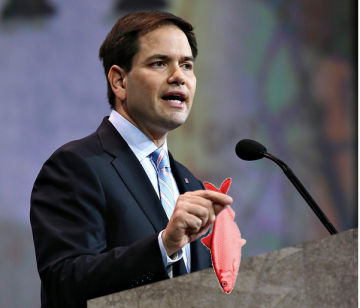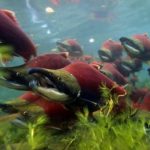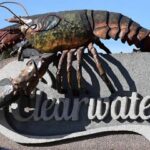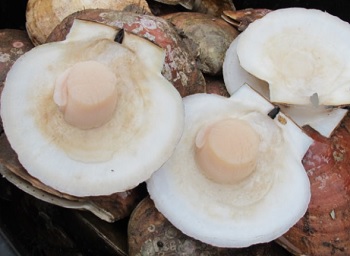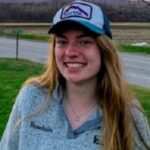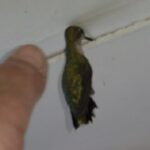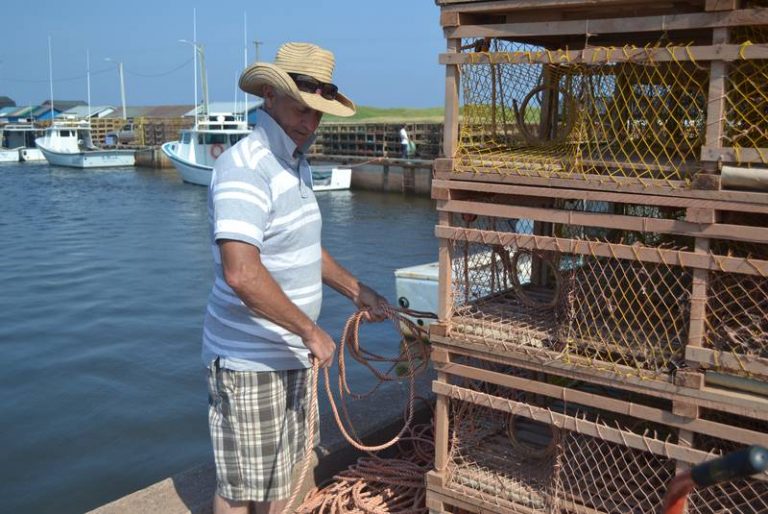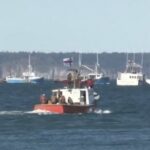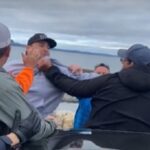Category Archives: South Atlantic
New superintendent named to head Biscayne National Park
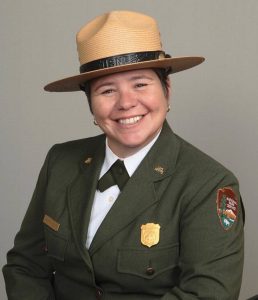 A seasoned ranger with posts in the chilly north including Glacier Bay and Crater Lake will become the new superintendent at South Florida’s subtropical Biscayne National Park, the National Park Service announced Monday. Margaret Goodro, now superintendent at Lake Clark National Park in Alaska, takes over from Brian Carlstrom. In November, Carlstrom was promoted to deputy associate director for the service after overseeing a controversial new management plan that for the first time establishes a marine preserve to help protect part of the park’s ailing reef. “I look forward to working with the park staff, stakeholders and partners to continue the great work of providing amazing recreational opportunities for visitors, while protecting and preserving this rare tropical park,” Goodro said in a statement. And while Goodro may have roots in the north where her family ran a commercial fishing business, she does have some local ties: Her spouse, Melinda, is a Tampa native. They plan to move to South Florida in late October. Read the rest here 10:38
A seasoned ranger with posts in the chilly north including Glacier Bay and Crater Lake will become the new superintendent at South Florida’s subtropical Biscayne National Park, the National Park Service announced Monday. Margaret Goodro, now superintendent at Lake Clark National Park in Alaska, takes over from Brian Carlstrom. In November, Carlstrom was promoted to deputy associate director for the service after overseeing a controversial new management plan that for the first time establishes a marine preserve to help protect part of the park’s ailing reef. “I look forward to working with the park staff, stakeholders and partners to continue the great work of providing amazing recreational opportunities for visitors, while protecting and preserving this rare tropical park,” Goodro said in a statement. And while Goodro may have roots in the north where her family ran a commercial fishing business, she does have some local ties: Her spouse, Melinda, is a Tampa native. They plan to move to South Florida in late October. Read the rest here 10:38
Better science and data, not catch shares
 With the exception of three mini-seasons (2012-2014) the red snapper fishery in the South Atlantic has been effectively closed for over six years. By most accounts from fishermen, red snapper are very plentiful – they are routinely encountered while fishermen target other species and divers report large schools. Yet, the stock assessment presented to the South Atlantic Fishery Management Council in June says that red snapper are still overfished and that overfishing is still occurring. This despite a lot of uncertainty about the data used in the assessment. Give the SAFMC credit for not accepting the assessment and asking its Scientific and Statistical Committee to reexamine the assessment and stock status determination this fall. The ongoing saga of the red snapper fishery highlights the fact that stock assessments can be flawed because of the lack of good biological and historical abundance information. In other words, much better science and data on our fisheries is needed. Instead of devoting adequate financial resources into stock assessments, NOAA has spent about $160 million over the last six years pushing its National Catch Share Policy in an effort to privatize fisheries. Studies have shown that catch share programs hurt fishing communities by destroying jobs and don’t provide any biological benefit to fisheries. 10:36
With the exception of three mini-seasons (2012-2014) the red snapper fishery in the South Atlantic has been effectively closed for over six years. By most accounts from fishermen, red snapper are very plentiful – they are routinely encountered while fishermen target other species and divers report large schools. Yet, the stock assessment presented to the South Atlantic Fishery Management Council in June says that red snapper are still overfished and that overfishing is still occurring. This despite a lot of uncertainty about the data used in the assessment. Give the SAFMC credit for not accepting the assessment and asking its Scientific and Statistical Committee to reexamine the assessment and stock status determination this fall. The ongoing saga of the red snapper fishery highlights the fact that stock assessments can be flawed because of the lack of good biological and historical abundance information. In other words, much better science and data on our fisheries is needed. Instead of devoting adequate financial resources into stock assessments, NOAA has spent about $160 million over the last six years pushing its National Catch Share Policy in an effort to privatize fisheries. Studies have shown that catch share programs hurt fishing communities by destroying jobs and don’t provide any biological benefit to fisheries. 10:36
Florida Keys commercial lobster fleet prepares for Saturday’s opening
 Hopes are high for high prices and calm seas as the Florida Keys commercial lobster fleet prepares for Saturday’s opening of the regular crawfish season. “Based on the level of [juvenile lobster] recruitment we’ve seen, we expect another outstanding season,” Bill Kelly, executive director of the Florida Keys Commercial Fishermen’s Association, said Tuesday. Last year, Key commercial lobster trappers and divers collected about 5.2 million pounds of lobster, which accounts for 90 percent of Florida’s statewide lobster harvest. “Lobster is the largest [commercial fishing] cash crop in the Keys, and the largest in the state of Florida,” Kelly said. “Every season, our biggest issue facing lobster and stone-crab trap fishermen is tropical storms and hurricanes that displace and destroy gear and disrupt the normal migratory pattern of lobster,” Kelly said. “We’ve been pretty fortunate since Hurricane Wilma in 2005.” Read the story here 07:55
Hopes are high for high prices and calm seas as the Florida Keys commercial lobster fleet prepares for Saturday’s opening of the regular crawfish season. “Based on the level of [juvenile lobster] recruitment we’ve seen, we expect another outstanding season,” Bill Kelly, executive director of the Florida Keys Commercial Fishermen’s Association, said Tuesday. Last year, Key commercial lobster trappers and divers collected about 5.2 million pounds of lobster, which accounts for 90 percent of Florida’s statewide lobster harvest. “Lobster is the largest [commercial fishing] cash crop in the Keys, and the largest in the state of Florida,” Kelly said. “Every season, our biggest issue facing lobster and stone-crab trap fishermen is tropical storms and hurricanes that displace and destroy gear and disrupt the normal migratory pattern of lobster,” Kelly said. “We’ve been pretty fortunate since Hurricane Wilma in 2005.” Read the story here 07:55
The seemingly ‘unstoppable’ lionfish flooding Florida’s coast and beyond
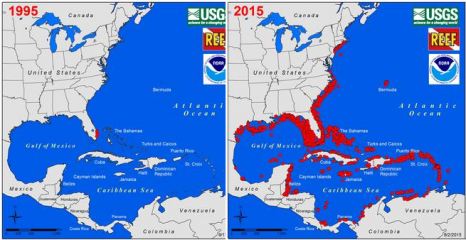 In 2011, when Rachel Bowman saw an abundance of large, pretty reddish fish while riding in a boat across the Florida coast, she didn’t think much of it. But a year later, once she got certified to dive, she speared the exotic fish and recognized an opportunity. Three years later, the fisherwoman, who was born in North Carolina and whose father was a shrimper, is selling this creature, called lionfish, to restaurants, local markets and 26 Whole Foods Markets across Florida. “I’m the first person to sell [lionfish] to Whole Foods and to set up that deal,” Bowman told CNBC. And in the Sunshine State, many other commercial fishing operations have begun to sell lionfish as well. The fish’s reproductive habits may bolster their successful invasion. Females may be able to spawn as often as every four days, which could result in the release of up to 2 million eggs a year from a single fish, according to USGS. Read the story here 08:05
In 2011, when Rachel Bowman saw an abundance of large, pretty reddish fish while riding in a boat across the Florida coast, she didn’t think much of it. But a year later, once she got certified to dive, she speared the exotic fish and recognized an opportunity. Three years later, the fisherwoman, who was born in North Carolina and whose father was a shrimper, is selling this creature, called lionfish, to restaurants, local markets and 26 Whole Foods Markets across Florida. “I’m the first person to sell [lionfish] to Whole Foods and to set up that deal,” Bowman told CNBC. And in the Sunshine State, many other commercial fishing operations have begun to sell lionfish as well. The fish’s reproductive habits may bolster their successful invasion. Females may be able to spawn as often as every four days, which could result in the release of up to 2 million eggs a year from a single fish, according to USGS. Read the story here 08:05
Atlantic States Marine Fisheries Commission Summer Meeting – Alexandria, Virginia August 2-4, 2016
The Atlantic States Marine Fisheries Commission will meet in at the The Westin Alexandria August 2-4, 2016. The agenda is subject to change. The agenda reflects the current estimate of time required for scheduled Board meetings. The Commission may adjust this agenda in accordance with the actual duration of Board meetings. Interested parties should anticipate Boards starting earlier or later than indicated herein. Board/Section meeting proceedings will be broadcast daily via webinar beginning at 10:15 a.m. on August 2nd and continuing daily until the conclusion of the meeting (expected to be 4:00 p.m.) on Thursday August 4th. Click here for details, Click here for webinar 10:45
National Marine Fisheries Service Announces Final Rule to Adjust the 2016 North and South Atlantic Swordfish Quotas
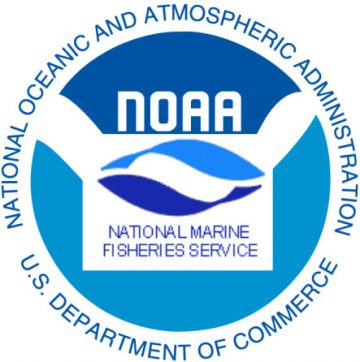 This final rule adjusts the 2016 annual North and South Atlantic swordfish quotas based on 2015 underharvests and international quota transfers, and modifies the annual quota adjustment public notice in certain circumstances. The final adjusted quota for North Atlantic swordfish is 3,359.4 metric tons (mt) dressed weight (dw). This quota is allocated as follows: the directed category quota = 3,009.4 mt dw; the incidental category = 300 mt dw; and the reserve category = 50 mt dw. The final adjusted quota for South Atlantic swordfish is 75.1 mt dw. Read the rest here National Marine Fisheries Service Announces Proposed Rule To Remove Vessel Upgrade Restrictions For Swordfish Directed And Atlantic Tuna Longline Category Limited Access Permits Read the rest here 16:41
This final rule adjusts the 2016 annual North and South Atlantic swordfish quotas based on 2015 underharvests and international quota transfers, and modifies the annual quota adjustment public notice in certain circumstances. The final adjusted quota for North Atlantic swordfish is 3,359.4 metric tons (mt) dressed weight (dw). This quota is allocated as follows: the directed category quota = 3,009.4 mt dw; the incidental category = 300 mt dw; and the reserve category = 50 mt dw. The final adjusted quota for South Atlantic swordfish is 75.1 mt dw. Read the rest here National Marine Fisheries Service Announces Proposed Rule To Remove Vessel Upgrade Restrictions For Swordfish Directed And Atlantic Tuna Longline Category Limited Access Permits Read the rest here 16:41
Shrimpers say blackgill mystery may wait in the St. Simons Sound
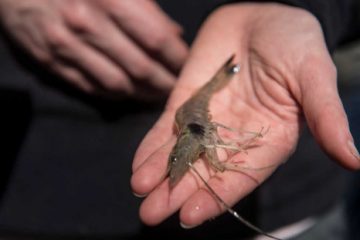 The crippling blackgill disease first appeared in local waters during the 1996 shrimping harvest, roughly six years after the last time state officials had permitted trawlers to operate in the St. Simons Sound. The parasitic disease, which affects reproduction and vigor in shrimp, is already showing up in the 2016 harvest that started June 1. It marks the earliest point in the season that blackgill has ever appeared in the harvest, according to Lindsey Aubart, a marine biologist with the state Department of Natural Resources. Scientists and marine biologists such as Aubart have studied the blackgill problem for years in search of a source and solution to the mysterious disease, which occurs from the Chesapeake Bay to the Gulf of Mexico but is most prominent in the waters of Georgia and South Carolina. Locally, a lot of experienced shrimpers suspect the answers may be found in those long-fallow shrimping waters of the St. Simons Sound. Read the rest here 08:46
The crippling blackgill disease first appeared in local waters during the 1996 shrimping harvest, roughly six years after the last time state officials had permitted trawlers to operate in the St. Simons Sound. The parasitic disease, which affects reproduction and vigor in shrimp, is already showing up in the 2016 harvest that started June 1. It marks the earliest point in the season that blackgill has ever appeared in the harvest, according to Lindsey Aubart, a marine biologist with the state Department of Natural Resources. Scientists and marine biologists such as Aubart have studied the blackgill problem for years in search of a source and solution to the mysterious disease, which occurs from the Chesapeake Bay to the Gulf of Mexico but is most prominent in the waters of Georgia and South Carolina. Locally, a lot of experienced shrimpers suspect the answers may be found in those long-fallow shrimping waters of the St. Simons Sound. Read the rest here 08:46
Working Waterfront: Gulf Seafood on county’s agenda today
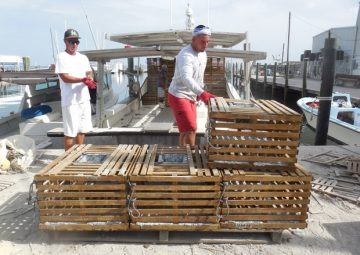 The Monroe County Commission will take the first significant step today in purchasing the former Gulf Seafood commercial working waterfront on Stock Island. The commission will vote to accept a $2.2 million state grant that would go toward the roughly $7 million purchase of the waterfront property, which is currently home to about a dozen fishermen. The county set aside $5 million in sales tax revenue for the purchase more than a year ago. The project could accomplish the goal of protecting commercial fishing in an area that has seen a tremendous growth in waterfront hotels, resorts and upscale marinas recently, fishermen said. Lower Keys commercial fisherman Daniel Padron called the purchase “monumental” for protecting commercial fishing in the Lower Keys. Read the rest here 10:17
The Monroe County Commission will take the first significant step today in purchasing the former Gulf Seafood commercial working waterfront on Stock Island. The commission will vote to accept a $2.2 million state grant that would go toward the roughly $7 million purchase of the waterfront property, which is currently home to about a dozen fishermen. The county set aside $5 million in sales tax revenue for the purchase more than a year ago. The project could accomplish the goal of protecting commercial fishing in an area that has seen a tremendous growth in waterfront hotels, resorts and upscale marinas recently, fishermen said. Lower Keys commercial fisherman Daniel Padron called the purchase “monumental” for protecting commercial fishing in the Lower Keys. Read the rest here 10:17
Lobster poacher jumps into the water, challenges game wardens to come and get him. They waited!
 One defendant in a lobster-poaching case Saturday reportedly threw his cell phone into the ocean at Bahia Honda, jumped into the ocean and challenged state officers “to come in the water and get him.” A second man booked in the Florida Fish and Wildlife Conservation Commission case ran from officers and hid for three hours before trying to return to his truck. He found that FWC Officer Adam Garrison was willing to outwait him. Miami residents Carlos M. Duran-Cantillo, 37, and Karel Cantillo-Martinez, 38, face multiple conservation counts after FWC officers charged them with possession of eight , all taken in a closed season. Five of the tails were undersized. Both also were charged with resisting arrest without violence and littering. Read the rest here 11:30
One defendant in a lobster-poaching case Saturday reportedly threw his cell phone into the ocean at Bahia Honda, jumped into the ocean and challenged state officers “to come in the water and get him.” A second man booked in the Florida Fish and Wildlife Conservation Commission case ran from officers and hid for three hours before trying to return to his truck. He found that FWC Officer Adam Garrison was willing to outwait him. Miami residents Carlos M. Duran-Cantillo, 37, and Karel Cantillo-Martinez, 38, face multiple conservation counts after FWC officers charged them with possession of eight , all taken in a closed season. Five of the tails were undersized. Both also were charged with resisting arrest without violence and littering. Read the rest here 11:30
Seminar in Marathon Fla. looks at spiny lobster research
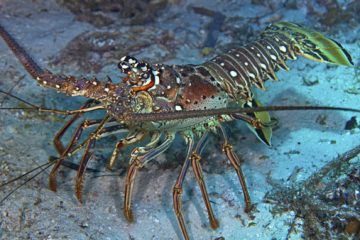 Some top experts on spiny lobster will meet Wednesday in Marathon to discuss the latest research on the crustacean, which is the top-grossing marine species in the Florida Keys generating $70 million a year to the local economy. The Keys waters account for nearly 90 percent of the spiny lobster harvest in the United States. A robust Asian market and a steady catch has made spiny lobster fishery the most lucrative in the Keys. Florida Fish and Wildlife Conservation Commission is hosting the all-day seminar Wednesday as a way to put out the latest research on spiny lobster to the local commercial fishermen and to the public, FWC lobster biologist Tom Matthews said. Bill Kelly, the executive director of the Florida Keys Commercial Fishermen’s Association, said there is a need for new science on the fishery, as the current science used to make regulations is “outdated and goes back to the 1990s.” Read the story here 11:57
Some top experts on spiny lobster will meet Wednesday in Marathon to discuss the latest research on the crustacean, which is the top-grossing marine species in the Florida Keys generating $70 million a year to the local economy. The Keys waters account for nearly 90 percent of the spiny lobster harvest in the United States. A robust Asian market and a steady catch has made spiny lobster fishery the most lucrative in the Keys. Florida Fish and Wildlife Conservation Commission is hosting the all-day seminar Wednesday as a way to put out the latest research on spiny lobster to the local commercial fishermen and to the public, FWC lobster biologist Tom Matthews said. Bill Kelly, the executive director of the Florida Keys Commercial Fishermen’s Association, said there is a need for new science on the fishery, as the current science used to make regulations is “outdated and goes back to the 1990s.” Read the story here 11:57
Shrimp slaves are a sign of the international seafood industry which we cannot compete with
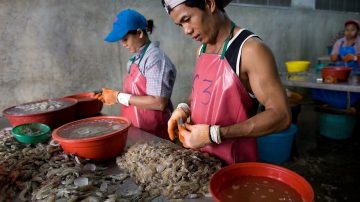 It’s been almost eight months since officials in Thailand raided a shrimp-peeling shed and freed dozens of Burmese slaves. Also last year, an investigation by The Associated Press led to the freeing of 2,000 slaves that were being held on an Asian island and being forced to process seafood that was on its way to Thailand and the U.S. The people who have been discovered and freed from those operations are in the minority. Far more remain in bondage, helping to produce the seafood that eventually makes its way into our nation. The fact is that much of the international seafood industry is fueled by slave labor and other unsavory practices. Our shrimpers cannot compete with industries that make widespread use of slave labor. Read the rest here 14:25
It’s been almost eight months since officials in Thailand raided a shrimp-peeling shed and freed dozens of Burmese slaves. Also last year, an investigation by The Associated Press led to the freeing of 2,000 slaves that were being held on an Asian island and being forced to process seafood that was on its way to Thailand and the U.S. The people who have been discovered and freed from those operations are in the minority. Far more remain in bondage, helping to produce the seafood that eventually makes its way into our nation. The fact is that much of the international seafood industry is fueled by slave labor and other unsavory practices. Our shrimpers cannot compete with industries that make widespread use of slave labor. Read the rest here 14:25
The ghost trap problem in Biscayne Bay
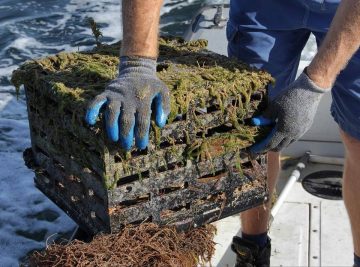 Beneath the glittering surface of Biscayne Bay, a menace lurks, wiping out fragile sea grass habitat, catching and killing as brutally, efficiently and indiscriminately as any monster from the deep: ghost traps. What goes inside the abandoned or lost traps stays inside — crabs left to cannibalize each other, baby lobster and fish too disoriented to escape. Heavy-grade plastic crab traps can even outlive their owners. “Just because someone’s not actually fishing a trap, it doesn’t mean the trap isn’t fishing,” said John Ricisak, a Miami-Dade County environmental resources project supervisor who heads county removal efforts. Ghost traps are so ubiquitous it’s hard to know how many exist. A 2013 study by the National Oceanic and Atmospheric Administration estimated more than 1.1 million ghost and derelict traps litter the Florida Keys. Read the rest here 19:29
Beneath the glittering surface of Biscayne Bay, a menace lurks, wiping out fragile sea grass habitat, catching and killing as brutally, efficiently and indiscriminately as any monster from the deep: ghost traps. What goes inside the abandoned or lost traps stays inside — crabs left to cannibalize each other, baby lobster and fish too disoriented to escape. Heavy-grade plastic crab traps can even outlive their owners. “Just because someone’s not actually fishing a trap, it doesn’t mean the trap isn’t fishing,” said John Ricisak, a Miami-Dade County environmental resources project supervisor who heads county removal efforts. Ghost traps are so ubiquitous it’s hard to know how many exist. A 2013 study by the National Oceanic and Atmospheric Administration estimated more than 1.1 million ghost and derelict traps litter the Florida Keys. Read the rest here 19:29
Sen. Marco Rubio calls for Commerce IG to review controversial red snapper regulations
 The National Oceanic and Atmospheric Administration, which sets the rules, announced last month that the 2015 ban would be extended into 2016. In his letter, Rubio argues that the years-long plan isn’t working and that public distrust is at “an all-time high.” A study of red snapper populations released in April found that the species still hasn’t recovered from over fishing and is still being overfished despite the strict regulations. While anglers must release red snapper, biologists estimate that roughly 40 percent of fish caught and released will later die due to the trauma of being reeled in from the ocean’s deep depths. But many fishermen dispute the study’s findings and have long criticized the regulations. Skeptics say they’re catching plenty of red snapper, which suggests the species is healthy enough to support harvesting. Read the rest here 08:23
The National Oceanic and Atmospheric Administration, which sets the rules, announced last month that the 2015 ban would be extended into 2016. In his letter, Rubio argues that the years-long plan isn’t working and that public distrust is at “an all-time high.” A study of red snapper populations released in April found that the species still hasn’t recovered from over fishing and is still being overfished despite the strict regulations. While anglers must release red snapper, biologists estimate that roughly 40 percent of fish caught and released will later die due to the trauma of being reeled in from the ocean’s deep depths. But many fishermen dispute the study’s findings and have long criticized the regulations. Skeptics say they’re catching plenty of red snapper, which suggests the species is healthy enough to support harvesting. Read the rest here 08:23
U.S. Commerce Department announces 2016 regional fishery council appointments
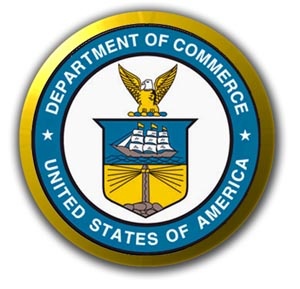 The U.S. Commerce Department today announced the appointment of 19 new and returning members to the eight regional fishery management councils that partner with NOAA Fisheries to manage ocean fish stocks. One at-large seat on the Mid-Atlantic Council will be announced by the Secretary at a later date. The new and reappointed council members begin their three-year terms on August 11. Each year, the Secretary of Commerce appoints approximately one-third of the total 72 appointed members to the eight regional councils. The Secretary selects members from nominations submitted by the governors of fishing states, territories and tribal governments. Council members are appointed to both obligatory (state-specific) and at-large (regional) seats. Council members serve a three-year term and can get reappointed to serve three consecutive terms. Asterisks preceding a member’s name indicate a reappointment. Read it here 17:24
The U.S. Commerce Department today announced the appointment of 19 new and returning members to the eight regional fishery management councils that partner with NOAA Fisheries to manage ocean fish stocks. One at-large seat on the Mid-Atlantic Council will be announced by the Secretary at a later date. The new and reappointed council members begin their three-year terms on August 11. Each year, the Secretary of Commerce appoints approximately one-third of the total 72 appointed members to the eight regional councils. The Secretary selects members from nominations submitted by the governors of fishing states, territories and tribal governments. Council members are appointed to both obligatory (state-specific) and at-large (regional) seats. Council members serve a three-year term and can get reappointed to serve three consecutive terms. Asterisks preceding a member’s name indicate a reappointment. Read it here 17:24
Black gill disease shows up early in Georgia shrimp
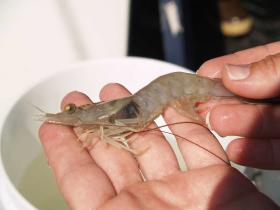 “We’re seeing 40 percent of our white shrimp infected,” said Pat Geer, chief of fisheries at the Georgia Department of Natural Resources. “We have never seen that before. Ever. So why, why are we seeing it that much earlier?” Geer put that question to a gathering of researchers, shrimpers and fisheries managers from Georgia and South Carolina on Wednesday at the University of Georgia Aquarium at Skidaway. Though unattractive, black gill shrimp are safe to eat. The discoloration is a result of a parasite that infects the gills. When it does, that tissue reacts by producing melanin, resulting in the tell-tale blackening. Researchers have determined the culprit is a ciliate, a single-celled organism with hair-like structures that propel it, but they haven’t been able to nail down which species it is. Read the story here 15:12
“We’re seeing 40 percent of our white shrimp infected,” said Pat Geer, chief of fisheries at the Georgia Department of Natural Resources. “We have never seen that before. Ever. So why, why are we seeing it that much earlier?” Geer put that question to a gathering of researchers, shrimpers and fisheries managers from Georgia and South Carolina on Wednesday at the University of Georgia Aquarium at Skidaway. Though unattractive, black gill shrimp are safe to eat. The discoloration is a result of a parasite that infects the gills. When it does, that tissue reacts by producing melanin, resulting in the tell-tale blackening. Researchers have determined the culprit is a ciliate, a single-celled organism with hair-like structures that propel it, but they haven’t been able to nail down which species it is. Read the story here 15:12
Frank Blum – Boost production to keep S.C. seafood industry afloat
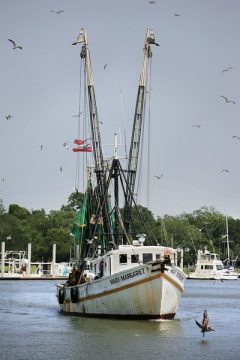 Where did, where does, where will your seafood come from? The year 1995 was a pivotal point for South Carolina seafood production. From 1950 to 1995 the average landings of seafood was 19.5 million pounds annually. Over the last 12 years the landings have averaged about 11.0 million pounds — a decrease in production of 43 percent. Average 2014 dollars per year to producers 1950 to 1996 were $38.7 million, and from 2003 to 2014 were $22.7 million. This is a decrease in revenue of 41 percent. Today 90 percent of all seafood consumed in the U.S. is imported. Here in the Lowcountry of South Carolina our consumption of imported seafood is somewhat less than this 90 percent because of our direct access to the ocean. Low-cost imports, consisting of 50 percent aquaculture, were major players in pushing many South Carolina watermen out of the seafood business by drastically undercutting their prices. Wild shrimp producers were hurt the most by low-priced imports. One quarter of all seafood consumed in the U.S. is shrimp. Read the rest here 09:58
Where did, where does, where will your seafood come from? The year 1995 was a pivotal point for South Carolina seafood production. From 1950 to 1995 the average landings of seafood was 19.5 million pounds annually. Over the last 12 years the landings have averaged about 11.0 million pounds — a decrease in production of 43 percent. Average 2014 dollars per year to producers 1950 to 1996 were $38.7 million, and from 2003 to 2014 were $22.7 million. This is a decrease in revenue of 41 percent. Today 90 percent of all seafood consumed in the U.S. is imported. Here in the Lowcountry of South Carolina our consumption of imported seafood is somewhat less than this 90 percent because of our direct access to the ocean. Low-cost imports, consisting of 50 percent aquaculture, were major players in pushing many South Carolina watermen out of the seafood business by drastically undercutting their prices. Wild shrimp producers were hurt the most by low-priced imports. One quarter of all seafood consumed in the U.S. is shrimp. Read the rest here 09:58
South Atlantic Fishery Management Council meeting June 13-17, 2016 Cocoa Beach FL
 The public is invited to attend the South Atlantic Fishery Management Council to be held in Cocoa Beach FL at the Hilton Cocoa Beach Oceanfront . Read the Meeting Agenda Click here, Briefing Book – June 2016 Council Meeting Click here Webinar Registration: Listen Live, Click here Additional info, click here 22:54
The public is invited to attend the South Atlantic Fishery Management Council to be held in Cocoa Beach FL at the Hilton Cocoa Beach Oceanfront . Read the Meeting Agenda Click here, Briefing Book – June 2016 Council Meeting Click here Webinar Registration: Listen Live, Click here Additional info, click here 22:54
Lobster-trap report draws ire from Florida Keys commercial lobster fishermen
 Florida Keys commercial lobster fishermen bristled at a report on traps in protected marine areas being presented at this week’s South Atlantic Fishery Management Council meeting. The report on small no-trapping areas created to safeguard spots with branching elkhorn or staghorn corals is scheduled for a Spiny Lobster Committee meeting at 9:30 a.m. Thursday in Cocoa Beach. “We worked [with fishery regulators] to develop these 60 coral protection areas,” said Ernie Piton, president of the Florida Keys Commercial Fishermen’s Association. “We even proposed more than they asked for.” Florida Fish and Wildlife Conservation Commission surveys at selected coral protection zones in 2014 and 2015 logged traps and parts of traps spotted in the zones, most of which are unmarked by warning buoys and do not appear on most nautical charts. “Some of the older gentlemen in our industry have been doing this 30 or 40 years and they don’t use GPS; they go by sight,” Piton said. Read the rest here 09:36
Florida Keys commercial lobster fishermen bristled at a report on traps in protected marine areas being presented at this week’s South Atlantic Fishery Management Council meeting. The report on small no-trapping areas created to safeguard spots with branching elkhorn or staghorn corals is scheduled for a Spiny Lobster Committee meeting at 9:30 a.m. Thursday in Cocoa Beach. “We worked [with fishery regulators] to develop these 60 coral protection areas,” said Ernie Piton, president of the Florida Keys Commercial Fishermen’s Association. “We even proposed more than they asked for.” Florida Fish and Wildlife Conservation Commission surveys at selected coral protection zones in 2014 and 2015 logged traps and parts of traps spotted in the zones, most of which are unmarked by warning buoys and do not appear on most nautical charts. “Some of the older gentlemen in our industry have been doing this 30 or 40 years and they don’t use GPS; they go by sight,” Piton said. Read the rest here 09:36
South Atlantic Fishery Management Council propose changes to Yellowtail Snapper fishery
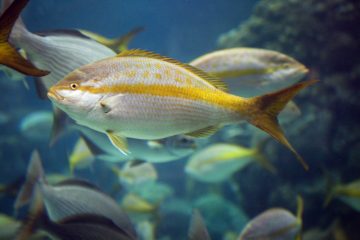 The change comes following requests from a group of Florida Keys fishermen, as yellowtail snapper are primarily harvested in the Keys. The commercial yellowtail fishery was closed in October in 2014, after National Marine Fisheries Service projected the fishery would meet its annual catch limit of 1.6 million pounds. The fishermen want the season to end in July when there is less fishing pressure and the fish are spawning, said Bill Kelly, executive for the Florida Keys Commercial Fishermen’s Association. “The closure should occur when prices are at their lowest and demand is at its lowest,” Kelly said. “Also, the season should be closed when the fish is spawning.” In addition, commercial fishermen have lobbied to reallocate some of the recreational catch to the commercial side, as the recreational side has only caught a little more than half of its 1.4 million pound annual limit, according to federal fishery managers. Read the rest here 08:40
The change comes following requests from a group of Florida Keys fishermen, as yellowtail snapper are primarily harvested in the Keys. The commercial yellowtail fishery was closed in October in 2014, after National Marine Fisheries Service projected the fishery would meet its annual catch limit of 1.6 million pounds. The fishermen want the season to end in July when there is less fishing pressure and the fish are spawning, said Bill Kelly, executive for the Florida Keys Commercial Fishermen’s Association. “The closure should occur when prices are at their lowest and demand is at its lowest,” Kelly said. “Also, the season should be closed when the fish is spawning.” In addition, commercial fishermen have lobbied to reallocate some of the recreational catch to the commercial side, as the recreational side has only caught a little more than half of its 1.4 million pound annual limit, according to federal fishery managers. Read the rest here 08:40
South Atlantic: Move surfaces to overhaul red snapper restrictions, limits
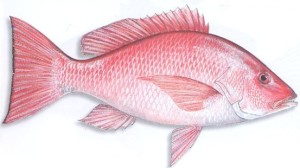 Following the recent announcement that anglers will continue to be prohibited from keeping red snapper in the Atlantic Ocean this year, a member of the regional council that oversees fishing in the Southeast’s federal waters wants to overhaul how the species is regulated. Ben Hartig, a commercial fisherman from Hobe Sound, sent a letter last week to members of the South Atlantic Fishery Management Council that said current regulations are based on unreliable information about the red snapper population and number of fish caught. Hartig proposed a range of possible changes to the years-long, controversial plan in place to help increase the species’ numbers that, if pursued by the council, could go into place as early as 2018. Read the rest here 10:24
Following the recent announcement that anglers will continue to be prohibited from keeping red snapper in the Atlantic Ocean this year, a member of the regional council that oversees fishing in the Southeast’s federal waters wants to overhaul how the species is regulated. Ben Hartig, a commercial fisherman from Hobe Sound, sent a letter last week to members of the South Atlantic Fishery Management Council that said current regulations are based on unreliable information about the red snapper population and number of fish caught. Hartig proposed a range of possible changes to the years-long, controversial plan in place to help increase the species’ numbers that, if pursued by the council, could go into place as early as 2018. Read the rest here 10:24
South Atlantic Council, NOAA science gets ripped! Another crooked closure of red snapper
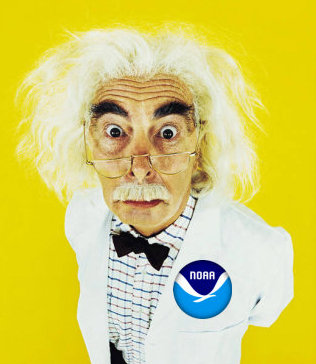 Many of you aren’t fishermen. But even if you don’t know a red snapper from gangsta rapper, this might still be worth a look. The South Atlantic Fisheries Management Council is as crooked and bloated a government bureaucracy as exists today. It perverts science. It feeds on special interests. More importantly, it squanders a natural resource. It announced this week the 2016 season for the American Red Snapper will be closed — as it was in 2015. During the three years prior, the season was open for a total of 12 days. It all began in 2008 when NOAA scientists determined that the red snapper stock in the South Atlantic was at just 3 percent of the biomass 50 years prior. That would have been 1958 when there was neither a NOAA, nor any other group counting red snapper. Perhaps 10 percent of all boats, recreational and commercial, could make the trip out 50 miles where the species thrives. There was no real sonar to find the hundreds of reefs where the fish spawned and no satellite positioning systems to find them again if you did hit a honey hole by accident or luck. So the “science” began as a fabrication, and that continues today. Read the op-ed here 07:45
Many of you aren’t fishermen. But even if you don’t know a red snapper from gangsta rapper, this might still be worth a look. The South Atlantic Fisheries Management Council is as crooked and bloated a government bureaucracy as exists today. It perverts science. It feeds on special interests. More importantly, it squanders a natural resource. It announced this week the 2016 season for the American Red Snapper will be closed — as it was in 2015. During the three years prior, the season was open for a total of 12 days. It all began in 2008 when NOAA scientists determined that the red snapper stock in the South Atlantic was at just 3 percent of the biomass 50 years prior. That would have been 1958 when there was neither a NOAA, nor any other group counting red snapper. Perhaps 10 percent of all boats, recreational and commercial, could make the trip out 50 miles where the species thrives. There was no real sonar to find the hundreds of reefs where the fish spawned and no satellite positioning systems to find them again if you did hit a honey hole by accident or luck. So the “science” began as a fabrication, and that continues today. Read the op-ed here 07:45
South Carolina’s commercial shrimp trawling season opens Monday
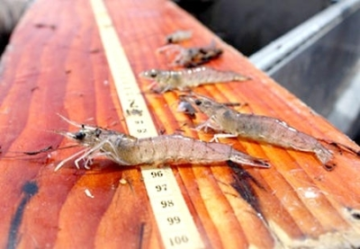 In the wake of South Carolina’s historic rainfall event in October 2015, fishermen and biologists were unsure how the unprecedented influx of freshwater would impact the state’s shrimp fishery. Now, local shrimp are back on the menu and contrary to early concerns, S.C. Department of Natural Resources (DNR) biologists are expecting a productive year, with models predicting the largest roe white shrimp crop since 1979. The commercial shrimp trawling season will open in all state waters where trawling is legal at 8 a.m. Monday. Shrimp season normally opens in mid to late May, after the peak spawning period of white shrimp has occurred. Eight smaller provisional areas opened in early April. Several key factors have contributed to 2016’s record shrimp stocks, according to DNR biologists. Read the rest here 23:30
In the wake of South Carolina’s historic rainfall event in October 2015, fishermen and biologists were unsure how the unprecedented influx of freshwater would impact the state’s shrimp fishery. Now, local shrimp are back on the menu and contrary to early concerns, S.C. Department of Natural Resources (DNR) biologists are expecting a productive year, with models predicting the largest roe white shrimp crop since 1979. The commercial shrimp trawling season will open in all state waters where trawling is legal at 8 a.m. Monday. Shrimp season normally opens in mid to late May, after the peak spawning period of white shrimp has occurred. Eight smaller provisional areas opened in early April. Several key factors have contributed to 2016’s record shrimp stocks, according to DNR biologists. Read the rest here 23:30
Port Royal will continue shrimp dock operations, explores building new seafood processing facility
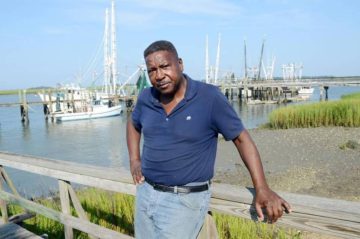 Charles Abner is still docked in Port Royal, finishing some work on his 73-foot shrimp trawler, “Lady Bernice,” before going to work as shrimp season begins. Abner plans to offload most of his shrimp at Benny Hudson Seafood on Hilton Head Island, where he said the money is a bit better. He also likes likes to offload in North Carolina and Georgia, where he said docks will front shrimpers fuel and ice. “I love the conditions over there (on Hilton Head),” Abner said Friday. “It’s a whole lot closer to the fishing ground; there’s quite a few other things. Port Royal wants to keep shrimpers like Abner from going elsewhere, aiming to make the docks off 11th Street on Battery Creek the desired destination in the area. Read the rest here 08:20
Charles Abner is still docked in Port Royal, finishing some work on his 73-foot shrimp trawler, “Lady Bernice,” before going to work as shrimp season begins. Abner plans to offload most of his shrimp at Benny Hudson Seafood on Hilton Head Island, where he said the money is a bit better. He also likes likes to offload in North Carolina and Georgia, where he said docks will front shrimpers fuel and ice. “I love the conditions over there (on Hilton Head),” Abner said Friday. “It’s a whole lot closer to the fishing ground; there’s quite a few other things. Port Royal wants to keep shrimpers like Abner from going elsewhere, aiming to make the docks off 11th Street on Battery Creek the desired destination in the area. Read the rest here 08:20
Marquesas Key: Coast Guard looking into commercial fishing vessel firing shots at recreational boat
 U.S. Coast Guard investigators are looking into a report that someone aboard a commercial fishing vessel fired several shots at a recreational boat about 20 nautical miles southwest of Wednesday morning. The Coast Guard’s Investigative Service is conducting a criminal probe on “the alleged shooting incident,” according to an agency press release. It’s not yet known if any arrests were made. Special Agent Paul Shultz, resident agent in charge of Key West for the Coast Guard Investigative Service, could not be reached for comment. The people aboard the recreational boat, only described in the press release as a 20-foot pleasure craft, were reportedly diving when the incident happened about 9:45 a.m. Read the rest here 07:44
U.S. Coast Guard investigators are looking into a report that someone aboard a commercial fishing vessel fired several shots at a recreational boat about 20 nautical miles southwest of Wednesday morning. The Coast Guard’s Investigative Service is conducting a criminal probe on “the alleged shooting incident,” according to an agency press release. It’s not yet known if any arrests were made. Special Agent Paul Shultz, resident agent in charge of Key West for the Coast Guard Investigative Service, could not be reached for comment. The people aboard the recreational boat, only described in the press release as a 20-foot pleasure craft, were reportedly diving when the incident happened about 9:45 a.m. Read the rest here 07:44
ASMFC Spring Meeting – May 2-5, 2016, Alexandria, Virginia
 The Atlantic States Marine Fisheries Commission will meet in Alexandria, Virginia at The Westin Alexandria 400 Courthouse Square May 2-5, 2016. The agenda is subject to change. The agenda reflects the current estimate of time required for scheduled Board meetings. The Commission may adjust this agenda in accordance with the actual duration of Board meetings. Interested parties should anticipate Boards starting earlier or later than indicated herein. Board/Section meeting proceedings will be broadcast daily via webinar beginning at 9:00 a.m. on May 2nd and continuing daily until the conclusion of the meeting (expected to be 2:30 p.m.) on May 5th. Click here for details, Click here for webinar 18:42
The Atlantic States Marine Fisheries Commission will meet in Alexandria, Virginia at The Westin Alexandria 400 Courthouse Square May 2-5, 2016. The agenda is subject to change. The agenda reflects the current estimate of time required for scheduled Board meetings. The Commission may adjust this agenda in accordance with the actual duration of Board meetings. Interested parties should anticipate Boards starting earlier or later than indicated herein. Board/Section meeting proceedings will be broadcast daily via webinar beginning at 9:00 a.m. on May 2nd and continuing daily until the conclusion of the meeting (expected to be 2:30 p.m.) on May 5th. Click here for details, Click here for webinar 18:42
Details emerge- Pilot may have seen missing Florida teens during search – Lawsuit filed
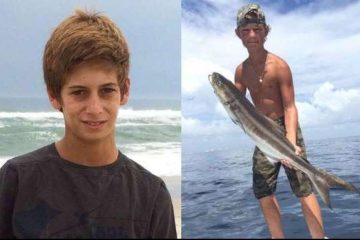 According to the FWC report, during the search for the boys on July 26, a pilot identified as Bobby Smith was searching for the boys and stated that he saw two pieces of white debris tied together by an orange lifejacket as he flew at an altitude of about 1,000 feet. He then circled the area “three or four” times at 200 feet and said he saw a person lying on the debris and lifting their arms above their head. James Dulin, a commercial fisherman who was fishing about five miles offshore, said that as the storm moved westward around 2 p.m., he saw 40 boats heading into Jupiter Inlet, presumably to take cover. Dulin said he saw a small boat with two “young people” on board head away from shore around the same time. 31 photo’s, Video, Read the rest here The family of one of the two Florida teens who disappeared at sea last summer is speaking out for the first time after being sued by the mother of the other missing teen over the iPhone that was found aboard the boys’ derelict fishing boat. Link 15:54
According to the FWC report, during the search for the boys on July 26, a pilot identified as Bobby Smith was searching for the boys and stated that he saw two pieces of white debris tied together by an orange lifejacket as he flew at an altitude of about 1,000 feet. He then circled the area “three or four” times at 200 feet and said he saw a person lying on the debris and lifting their arms above their head. James Dulin, a commercial fisherman who was fishing about five miles offshore, said that as the storm moved westward around 2 p.m., he saw 40 boats heading into Jupiter Inlet, presumably to take cover. Dulin said he saw a small boat with two “young people” on board head away from shore around the same time. 31 photo’s, Video, Read the rest here The family of one of the two Florida teens who disappeared at sea last summer is speaking out for the first time after being sued by the mother of the other missing teen over the iPhone that was found aboard the boys’ derelict fishing boat. Link 15:54
Congressional bills aim to kill Biscayne National Park’s protected no-fishing zone
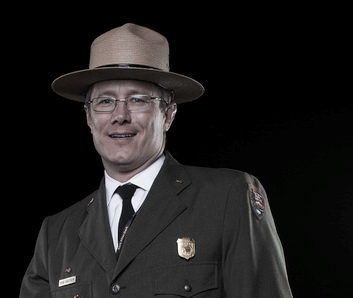 A planned no-fishing zone in Biscayne National Park could be undone by Congress. U.S. Sen. Marco Rubio (R-Fla.) Sen. Bill Cassidy (R-La.) this week filed a Senate bill called the Preserving Public Access to Public Waters Act that puts the 16-square-mile Biscayne marine reserve in its crosshairs. Sport and commercial fishing organizations, including the CCA and the Florida Keys Commercial Fishermen’s Association, protested the reserve as excessive and endorsed the congressional bills intended to remove it. The Florida Fish and Wildlife Conservation Commission objected to closing a reef-fishing area accessible to the large South Florida boating community. Read the rest here 14:36
A planned no-fishing zone in Biscayne National Park could be undone by Congress. U.S. Sen. Marco Rubio (R-Fla.) Sen. Bill Cassidy (R-La.) this week filed a Senate bill called the Preserving Public Access to Public Waters Act that puts the 16-square-mile Biscayne marine reserve in its crosshairs. Sport and commercial fishing organizations, including the CCA and the Florida Keys Commercial Fishermen’s Association, protested the reserve as excessive and endorsed the congressional bills intended to remove it. The Florida Fish and Wildlife Conservation Commission objected to closing a reef-fishing area accessible to the large South Florida boating community. Read the rest here 14:36
Charleston’s maritime history – The mosquito fleet
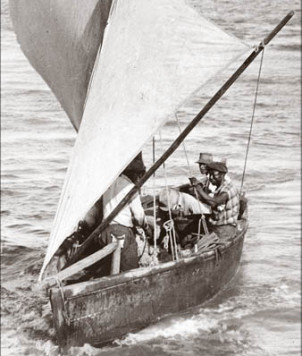 They were among the best watermen in Charleston’s maritime history, their small boats a familiar and beloved sight as they sailed out each morning and returned each afternoon with their catch. From the 1860s until the 1950s, the several hundred African American fishermen who worked the sailing boats of the mosquito fleet formed the core of Charleston’s seafood industry. They fished the creeks, rivers, harbor, and, weather permitting, the offshore banks. They would often go as far out as 30 miles to catch porgy, bass, whiting and, if lucky, a “jack fish.” “One by one they shoved off, and lay in the stream while they adjusted their spritsails and rigged their full jibs abeam, like spinnakers, for the free run to the sea,” wrote Dubose Heyward, describing Charleston’s mosquito fleet in his celebrated novel, Porgy. Read the rest here 13:58
They were among the best watermen in Charleston’s maritime history, their small boats a familiar and beloved sight as they sailed out each morning and returned each afternoon with their catch. From the 1860s until the 1950s, the several hundred African American fishermen who worked the sailing boats of the mosquito fleet formed the core of Charleston’s seafood industry. They fished the creeks, rivers, harbor, and, weather permitting, the offshore banks. They would often go as far out as 30 miles to catch porgy, bass, whiting and, if lucky, a “jack fish.” “One by one they shoved off, and lay in the stream while they adjusted their spritsails and rigged their full jibs abeam, like spinnakers, for the free run to the sea,” wrote Dubose Heyward, describing Charleston’s mosquito fleet in his celebrated novel, Porgy. Read the rest here 13:58






